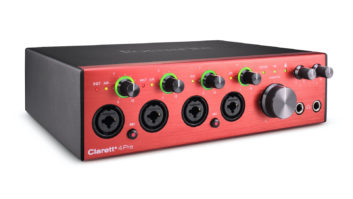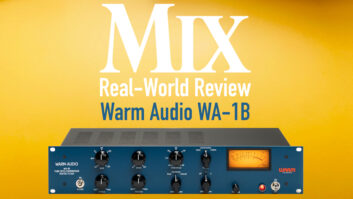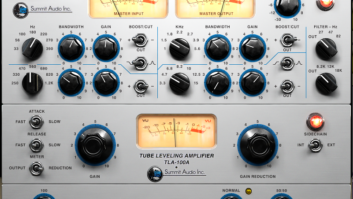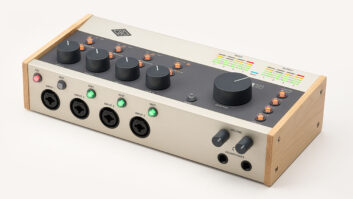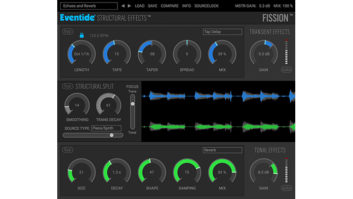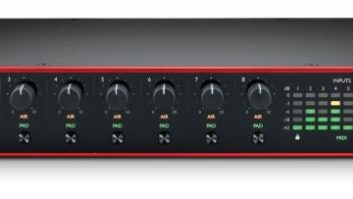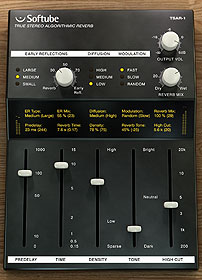
The Softube TSAR-1 is designed to get great reverb sounds quickly.
TSAR is shorthand for True Stereo Algorithmic Reverb, but it might as well stand for “Tweak Simply And Relax.” The plug-in’s minimalist control set (only 11 controls) is so fast and easy to use that you won’t break a sweat getting terrific reverb sounds.

TSAR-1 (Mac/Win) uses four audio engines that crossfeed stereo input signals between its left and right channels in a way that’s similar to how natural reverberation in an acoustic space propagates; mono and mono-to-stereo modes of operation are also supported. The plug-in supports AU, RTAS and VST formats, and sampling rates from 44.1 to 192 kHz. It requires an iLok. (A first-generation iLok will do.)
A “lite” version of the plug-in, TSAR-1R, is bundled with TSAR-1 and focuses on producing only natural-sounding reverbs. I reviewed the TSAR-1 (Version 1.0.2) in Digital Performer V. 7.21 on an 8-core Mac Pro running OS 10.5.8.
O SOLO MIO
TSAR-1 uses only one algorithm and relies on your parameter-control adjustments to mimic plates, chambers, rooms and halls. Use the three-step Early Reflections control to choose very short echo patterns based on a small, medium or large space. The reverb tail (late reflections) can be fashioned to taste using separate controls for diffusion, density, modulation and decay time. A “random” modulation setting emulates the chaotic progression of natural reverbs over time. Two periodic modulation settings are also provided for very subtle chorus effects. Reverb decay times range from 0.15 to 15 seconds.
The Reverb Tone slider is deceptively named: It doesn’t adjust static filter settings but is actually a damping control for the reverb tail. A Bright setting applies damping to bass frequencies; that is, the high frequencies decay more slowly. The darker settings damp the highs. Although you can’t adjust crossover frequencies with such a simple design, it makes for lickety-split timbral adjustments. You can also apply a high-cut filter to both the reverb tail and early reflections; and adjust the corner frequency from 200 Hz to 20 kHz.
The pre-delay control adjusts the amount of time between the early reflections (not the onset of dry signal) and the start of the reverb tail; it ranges from 0 to 1,000 ms. Adjust the blend between early reflections and the reverb tail using the Early Reflections Mix control. Output level and wet/dry mix knobs complete the control set. Stereo I/O meters are provided.
A display area in the middle of the GUI shows current parameter values and is the gateway to the TSAR-1’s innovative Undo/Redo protocol. Clicking on a parameter value’s readout alternately toggles its associated control between its previous and current settings. This design gives you one step of independent Undo/Redo for each of 10 reverb parameters (all controls except output level) at any point during your tweaks.

SPACE CRAFT
TSAR-1’s overall sound is bright, clear, uncluttered and nuanced. That said, you can certainly create dark-sounding spaces by plunging the tone and high-cut controls. To get you started, the plug-in offers more than three-dozen presets, many of which sound excellent. Fashioning my own presets was easy as pie due to the relatively lean control set.
TSAR-1 sounded awesome on trap drums. I crafted explosive plate reverbs by using high amounts of diffusion, lowering the relative level of early reflections, dialing in a bright reverb tone and setting the density control between medium and high values.
Cranking the Early Reflections Mix control to the max completely eliminated the reverb tail and created outstanding ADT (automatic double-tracking) effects on lead vocals. Additionally, I could craft convincing concert hall settings by adjusting controls for low density, high diffusion, “large” early reflections, and relatively long pre-delay and decay times. The resulting sound bestowed very clear, airy and expansive acoustics on vocals and violins. Small room reverbs lent plausible ambience to close-miked electric guitars and could be produced by choosing a few milliseconds of pre-delay, short reverb time, high density, and a neutral or dark tone.
On the downside, the few “gated reverb” presets that were offered sounded like discrete early reflections and were thoroughly unconvincing. I wished I could lock the output volume control so it didn’t change when cycling through presets for inspiration. And while you can automate the TSAR-1’s control settings, doing so can cause the reverb to mute its output or introduce unpleasant artifacts, and parameter adjustments are often erratic on playback in Digital Performer.
I also wish that the pre-delay control adjusted how soon early reflections voice after dry signal (instead of setting the delay time between early reflections and the start of the reverb tail). There is currently no way to adjust the onset of early reflections to match a song’s tempo. In fact, because the start time for early reflections is not accounted for in TSAR-1’s pre-delay readout, tweaking the reverb tail’s onset to match a song’s tempo must be done completely by ear. There is no sync-to-host function that would allow automatically setting the pre-delay for either the early reflections or reverb tail to note values for the song.
IS IT RIGHT FOR YOU?
TSAR-1 sacrifices deep programmability for breezy ease of use. For most users, it’s a good trade-off. True reverb aficionados will want control of more parameters in some situations. And while I wish there were more algorithms included, the one that’s provided is a beauty. TSAR-1 gets great reverb sounds at jackrabbit speed.
Mix
contributing editor Michael Cooper is the owner of Michael Cooper Recording in Sisters, Ore.

Click on the Product Summary box above to view the TSAR-1 product page.
